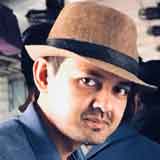Excerpts from exclusive interview of Nemai Ghosh taken 4 years ago
Reproduction of a short interview of Nemai Ghosh taken 4 years back. It is titled The Flâneur and the excerpt is from Calcutta Kolkata Notebook, published by Starmark
• What Kolkata means to you?
Kolkata is my lifeline. I owe everything to this city. I went around the world but have not felt comfortable anywhere. I never stayed outside Kolkata for more than 45 days at a stretch. Even on that occasion, it was for archival work at Lomo in France where my involvement was absolutely necessary. The small pleasures that I still derive from walking around this city and observing life on the streets are ethereal, to say the least.
• Which are your favourite places in Kolkata?
Nandan, Academy of Fine Arts and Victoria Memorial Hall.
• Who according to you are the Kolkata icons?
I have learned a lot from my association with Utpal Dutt whose sense of discipline was exemplary. And of course, needless to say, Satyajit Ray whose indulgence I was lucky to receive. What an amazing creative mind! One thing that stayed on with me is the way he utilised time.
• Who inspired you to take up photography?
During my early years, I was inspired by Bhupendranath Sanyal of Studio Renaissance at Ballygunge. Sadly, the studio is no more. However, in its prime, the studio was a cultural meeting point where Pandit Ravi Shankar, Ritwik Ghatak, Mrinal Sen and others would congregate to discuss the various aspects of music and filmmaking. Bhupenbabu used to say that subjects are all around. It is for the photographer to see and compose visuals. Later I came to know of Cartier Bresson’s work, and he became my idol. In fact, he was kind enough to write the preface to my book, Ray at 70. I still cherish my brief interaction with him in Paris.
• How is it like to photograph in Kolkata?
What attracts me to Kolkata is the human element. I try to capture faces that tell stories. There is an inherent drama in every nook and corner of this city. You need to have the picture in your mind first and only then can you take photographs. Every moment in the city has epic possibilities. My fingers vibrate on the shutter when I confront these moments. Once, when I was the production photographer of Ray’s Pikoo, we were shooting at a high-rise from where my gaze picked up an astounding angle of the GPO. The moment was irresistible and my fingers moved automatically. One moment of artistic distraction but you get inevitably drawn to the magic of the image. No city, except maybe Paris, has this kind of magic. Or maybe I am blindly partial to Kolkata.
• What kind of cameras do you use?
I still and will always shoot in the analog format. Earlier I used Canon QL17 with fixed lens, now I shoot with Nikon F100.
• Which are your favourite Film Sets?
Satyajit Ray’s Kolkata trilogy (Mahanagar, Pratindwandi, Jana Aranya), Mrinal Sen’s Calcutta 71, and Sujoy Ghosh’s Kahaani.
• Which authors and musicians of Kolkata inspire you?
I personally like the way Sunil Gangopadhyay and Samaresh Basu described the underbelly of Kolkata. I am still in awe of Debabrata Biswas, Pankaj Kumar Mullick, and Hemanta Mukhopadhyay. Once at the Gastrin Place studio of Aakashvani, I met Pankaj babu when I was quite young and I can still recollect the warmth of that meeting.
• What’s your take on the Street Food of Kolkata?
Kachauri and Aaloo Tarkari of North Kolkata is my favourite. Another favourite haunt is Nepal Sweets at Vivekananda Road. Of course, morning tea at Balwant Singh Dhaba is a must.
• How has the city changed over the years?
Change is necessary for every city as it evolves in its own way. I am extremely nostalgic about the past heritage of Kolkata but who is immune to change? It is a way of life and it is always better to accept it and move on.









